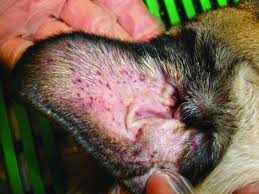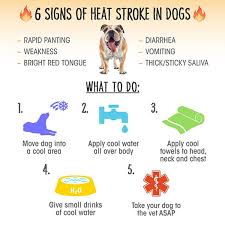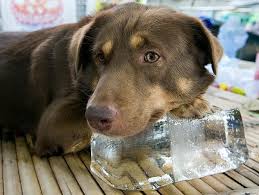Heat stroke is a severe form of hyperthermia that occurs when a pet’s body temperature exceeds their ability to dissipate heat. This can lead to damage to internal organs, neurological issues, and can be fatal if not addressed immediately.
Heat stroke is a life-threatening condition that can affect pets during hot weather. It occurs when a pet’s body temperature rises to dangerous levels, leading to various health issues and even death if not treated promptly. In this comprehensive guide, we’ll explore the causes of heat stroke in pets, identify symptoms, discuss effective treatments, outline prevention strategies, and answer frequently asked questions.
Common Causes of Heat Stroke in Pets:
- High Environmental Temperatures:
- Pets exposed to high temperatures and humidity, especially without adequate shade or water, are at risk.
- Lack of Ventilation:
- Being left in poorly ventilated areas, such as cars, can cause rapid overheating.
- Excessive Exercise:
- Intense physical activity during hot weather can lead to heat stroke.
- Breed Predisposition:
- Certain breeds, particularly brachycephalic (short-nosed) breeds like Bulldogs and Pugs, are more susceptible.
Symptoms of Heat Stroke in Pets:
Early Signs:
- Excessive panting and drooling
- Restlessness and discomfort
- Red or pale gums
- Increased heart rate

Advanced Signs
- Vomiting and diarrhea
- Weakness and lethargy
- Staggering or difficulty walking
- Collapse or unconsciousness
- Seizures
- For more about diseases of pets [CLICK HERE]

Treatment Options for Heat Stroke in Pets:
Immediate Care:
- Move to a Cool Area:
- Immediately move the pet to a shaded or air-conditioned area.
- Cool the Pet Down:
- Use cool (not cold) water to wet the pet’s body, especially the abdomen, armpits, and paw pads. Avoid using ice or very cold water as it can constrict blood vessels and slow down cooling.
- Offer Water:
- Provide small amounts of cool water to drink, but do not force the pet to drink.
Veterinary Care:
- Intravenous Fluids:
- Veterinarians may administer IV fluids to help rehydrate and cool the pet.
- Oxygen Therapy:
- Providing oxygen can assist with breathing difficulties and improve oxygen levels in the blood.
- Monitoring and Support:
- Continuous monitoring of vital signs and organ function is crucial. Additional treatments may be needed for complications such as kidney damage or neurological issues.
Prevention Strategies:
Limit Exercise:
Avoid strenuous exercise during hot weather, particularly during peak heat hours. Opt for early morning or late evening walks.
Provide Shade and Water:
Ensure pets have access to plenty of fresh water and shaded areas when outdoors. Consider using cooling mats or fans to help keep them cool.
Never Leave Pets in Cars:
Even with windows cracked, temperatures inside cars can rise rapidly to deadly levels. Never leave pets unattended in vehicles.
Use Cooling Products:
Invest in cooling vests, bandanas, and other products designed to help regulate your pet’s body temperature.

Be Aware of Breed Risks:
Be extra cautious with breeds prone to heat stroke, and monitor them closely during warm weather.
Conclusion:
Heat stroke is a serious and potentially fatal condition that requires immediate attention and proper care. By understanding the causes, recognizing the symptoms, and knowing how to treat and prevent heat stroke, pet owners can help ensure the safety and well-being of their furry friends during hot weather. Always be vigilant and proactive in keeping pets cool and hydrated, and consult with a veterinarian if you suspect heat stroke. A cool, well-cared-for pet is a happy pet!
- For more details [CLICK HERE]
FAQs :-
Q1: Can heat stroke affect all pets?
A1: Yes, heat stroke can affect all types of pets, but certain breeds, young, elderly, and overweight pets are more susceptible.
Q2: How quickly can heat stroke develop in pets?
A2: Heat stroke can develop rapidly, within minutes of exposure to high temperatures, especially in confined or poorly ventilated spaces.
Q3: What should I do if I suspect my pet has heat stroke?
A3: Move the pet to a cool area, begin cooling measures, and seek immediate veterinary attention.
Q4: How can I prevent heat stroke in my pet during summer?
A4: Limit exercise during peak heat, provide shade and water, never leave pets in cars, and use cooling products. Be extra cautious with high-risk breeds.
Q5: Are there long-term effects of heat stroke in pets?
A5: Heat stroke can cause long-term damage to organs such as the heart, liver, kidneys, and brain. Prompt treatment is essential to minimize these risks.

